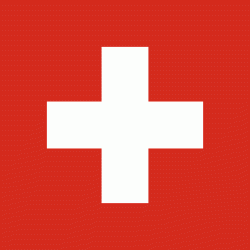Wattenwil
Wattenwil is a municipality in the administrative district of Thun in the canton of Bern in Switzerland.
Wattenwil is first mentioned in 1226 as Watenwile.
The oldest traces of a settlement in the area are several Bronze Age graves around Vorderrainstrasse and Höstettli. During the Middle Ages Wattenwil was owned by the Counts of Neuchâtel-Nidau. After the murder of Albert I of Germany in 1308 by Duke John Parricida, the area was sold or pledged to the Barons of Strättligen. The Barons held the villages until the extinction of their line in 1349, after which it was inherited by the Lords of Burgistein. The three settlements that today make up Wattenwil never had a central village, castle or manor house. However, it was the center of a high court with gallows. In 1376, the city-state of Bern acquired control of the nearby city of Nidau and began expanding their power over the region. In 1388 Bern acquired rights over the Wattenwil area, however the high court and gallows remained under the authority of local nobles who opposed Bernese expansion. Bern created the Seftigen District court to oppose the Wattenwil court and expand their power in the region. Partially in 1499 and more fully in 1516 the Bernese citizen Bartholomew May acquired the Strättligen lands and ownership of Wattenwil. Over the following century it was bought and inherited several times, until 1641 when the farmers of Wattenwil bought the right to self-government. However, in the following year, they sold the right to Bern for 1000 pounds and became part of the District of Seftigen.
For much of the history of the villages, they were part of the parish of Thurnen with a local chapel. In 1659 they broke away from Thurnen to become an independent parish. In 1683 the chapel was replaced with a larger parish church, which still stands today.
In 1887 a hospital opened in the municipality. It gradually grew into a district hospital which served Wattenwil and nine other municipalities. The hospital and the secondary school, which opened in 1902, made Wattenwil into a regional center. The local economy is based on agriculture, cheese production, forestry and small businesses. Over half of the work force commutes to jobs in nearby cities.
Wattenwil is first mentioned in 1226 as Watenwile.
The oldest traces of a settlement in the area are several Bronze Age graves around Vorderrainstrasse and Höstettli. During the Middle Ages Wattenwil was owned by the Counts of Neuchâtel-Nidau. After the murder of Albert I of Germany in 1308 by Duke John Parricida, the area was sold or pledged to the Barons of Strättligen. The Barons held the villages until the extinction of their line in 1349, after which it was inherited by the Lords of Burgistein. The three settlements that today make up Wattenwil never had a central village, castle or manor house. However, it was the center of a high court with gallows. In 1376, the city-state of Bern acquired control of the nearby city of Nidau and began expanding their power over the region. In 1388 Bern acquired rights over the Wattenwil area, however the high court and gallows remained under the authority of local nobles who opposed Bernese expansion. Bern created the Seftigen District court to oppose the Wattenwil court and expand their power in the region. Partially in 1499 and more fully in 1516 the Bernese citizen Bartholomew May acquired the Strättligen lands and ownership of Wattenwil. Over the following century it was bought and inherited several times, until 1641 when the farmers of Wattenwil bought the right to self-government. However, in the following year, they sold the right to Bern for 1000 pounds and became part of the District of Seftigen.
For much of the history of the villages, they were part of the parish of Thurnen with a local chapel. In 1659 they broke away from Thurnen to become an independent parish. In 1683 the chapel was replaced with a larger parish church, which still stands today.
In 1887 a hospital opened in the municipality. It gradually grew into a district hospital which served Wattenwil and nine other municipalities. The hospital and the secondary school, which opened in 1902, made Wattenwil into a regional center. The local economy is based on agriculture, cheese production, forestry and small businesses. Over half of the work force commutes to jobs in nearby cities.
Map - Wattenwil
Map
Country - Switzerland
 |
 |
| Flag of Switzerland | |
Switzerland is geographically divided among the Swiss Plateau, the Alps and the Jura; the Alps occupy the greater part of the territory, whereas the Swiss population of approximately 8.7 million is concentrated mostly on the plateau, where the largest cities and economic centres are located, including Zürich, Geneva and Basel.
Currency / Language
| ISO | Currency | Symbol | Significant figures |
|---|---|---|---|
| CHF | Swiss franc | Fr | 2 |
| CHE | WIR Bank | 2 | |
| CHW | WIR Bank | 2 |
| ISO | Language |
|---|---|
| FR | French language |
| DE | German language |
| IT | Italian language |
| RM | Romansh language |















